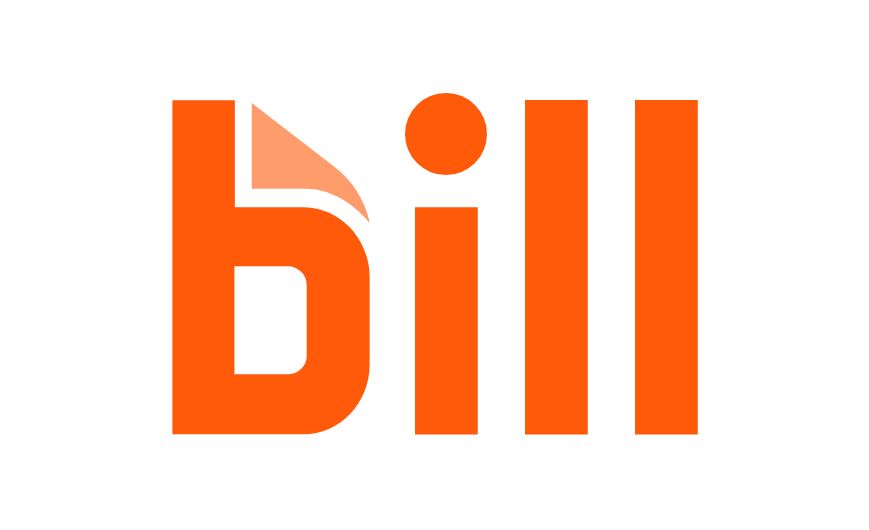Have you ever had a Class V cavity preparation right at the gingival margin ready to be restored, when the gingiva starts bleeding heavily? Several hemostatic agents are supposed to stop bleeding, and they do – but if you even slightly touch the gingiva with your instrument the bleeding starts again. Frustrating, isn’t it? Unless you are extremely careful and very lucky, the restoration may easily be ruined (Fig. 1). At least, your day is ruined.
Actually, hemostatic agents – at least the best of them – work very well if we use them correctly. Let me share with you a clinical trick I learned from Dr Dan Fischer more than 20 years ago, which I’ve been successfully practicing since.
Hemostatic agents are coagulants, causing the agglutination of blood proteins. The reaction is instant, but the mere contact of the agents with the bleeding surface results in only superficial coagulation. And this is where we dentists often make the first mistake. We are afraid of damaging the gingiva, thus we only gently apply the agent e.g. with a plastic brush tip or with the tip of the instrument. Alternatively, we may place a cord soaked in the agent into the bleeding sulcus. Both techniques are rather ineffective since the effect of the small amount of agent is overwhelmed by the constant bleeding. Even if the bleeding seems to stop, the slight touch of an instrument, placing the matrix band, or applying the etchant gel easily provokes it again.
The trick to profound hemostasis is simple: scrubbing of copious amounts of hemostatic agent against the bleeding tissue. Scrubbing removes the superficial coagulum, ensures that fresh agent is constantly available to meet the blood oozing from the capillaries, and forces the coagulum deeper into the capillary openings – as long as there is enough agent to meet the challenge. Combining the ease of application with scrubbing force is most effectively achieved with a Metal Dento-Infuser tip (Ultradent Products; Fig. 2) connected into a Luer-Lock syringe containing Astringedent 15.5% ferric sulfate (Ultradent Products) or Astringedent X 12.7% iron solution (Ultradent Products), allowing constant and controlled application of the hemostatic agent during scrubbing (in close contact with the bleeding capillaries) (Fig. 3). The scrubbing force required is approximately equal to that required to scratch a lottery ticket.
Fig 1. Blood stain at the marginal third of a composite resin filling in a premolar, accompanied with a 1-mm gap at the gingival margin. The restoration is less than 6 months old. Photo by Leo Tjäderhane
Fig 2. Metal Dento-InfusorTM tip allows delivery of pressure and a brush for scrubbing.
Fig 3. Metal Dento-Infusor tip delivering the hemostatic agent right at the orifices of the bleeding capillaries. Constant application of the hemostatic agent with the pressure and brushing movement, creates the coagulum that closes the capillary orifices.
Fig 4. Vigorous washing effectively removes the loose coagulum that could mask slight bleeding underneath. The gingival margin is dried with the air/-water syringe and observed in case some localized bleeding still occurs, which and requires further scrubbing of the hemostatic agent.
Fig 5. Retraction cord, dry or soaked with the hemostatic agent, is easy to place when the sulcus is no longer bleeding. In many cases, the cord helps placing the marginal side of the cervical matrix correctly after applying the restorative material.
After 5-10 seconds of scrubbing, depending on the extent of bleeding, the gingival margin is washed, not only to remove the coagulum but also to test the hemostatic effect. This is the step in which we dentist often make the second mistake. Being afraid to introduce new bleeding, we tend to be too cautious with our washing. Instead, we need to wash vigorously to remove all loose coagulum and to reveal the areas where bleeding may still occur (Fig. 4). Only then are we able to identify the areas where the capillaries are incompletely blocked, where the further application of the agent and scrubbing is required. In most cases, no more than two rounds are needed to achieve profound hemostasis for the whole working area. Then we are ready to continue with the restorative procedure.
At this point, a retraction cord can be placed if needed (Fig. 5). It can be soaked with the hemostatic agent; though my personal preference is to use it dry whenever possible. Placing the cord into a bleeding sulcus is both difficult and, in many cases, ineffective since the hemostatic effect of a relatively small amount of agent soon wears out.
The ”scrub and wash” technique helps to achieve complete and long-lasting hemostasis in less than a minute, even in the most vigorously bleeding and inflamed gingival tissue. The tissue will now tolerate a matrix, etching acid and adhesives without the risk of bleeding. Time well spent to ensure conditions that allow high-quality restorative work. Hemostatic agents and coagulum remnants have been suggested to affect the bonding strength1,2 and marginal integrity2 of the restoration. With ferric sulfate, acid etching is sufficient to remove the potential remnants to allow appropriate bonding 2 and good marginal adaptation3. When self-etch adhesives are used, cleaning the surface with Consepsis Scrub (Ultradent Products, Inc.) containing 2% chlorhexidine gluconate is a safe way to combine the cleaning of the surface with the potential prevention of the hybrid layer collagen against collagenolytic enzymes4.
You may wonder if you should worry about damaging the gingival tissue with rather a vigorous scrubbing. Well, don’t worry! You cannot damage the gingival epithelium. It has a tensile strength of approximately4 MPa5. If mechanical force could cause permanent damage to the gingiva, we couldn’t treat periodontitis. If something comes loose during your scrubbing, it is inflammatory granulation tissue and the patient is better off without it.
Editorial note: A list of references can be obtained from the publisher.
As curing light technology improves, dentists are consistently sold on irradiance (mw per cm2) as being the defining factor in beam effectiveness. While ...
Dr Rafael Beolchi is a restorative dentist working in aesthetic dentistry and oral rehabilitation in private practice. He teaches around the world, focusing...
Michelangelo took four years to paint the Sistine Chapel and two years to complete the sculpture of David.
Ultradent Products, Inc., a leading developer and manufacturer of high-tech dental materials and equipment, launched the newest edition of its ...
The True Story of One VALO Curing Light's Journey to Space
Dental Tribune MEA had the pleasure to talk to Prof Lorenzo Breschi from Italy about minimally invasive dentistry and trends in the dental industry.
...
Live webinar
Thu. 18 April 2024
7:00 pm UAE (Dubai)
Live webinar
Mon. 22 April 2024
6:00 pm UAE (Dubai)
Prof. Dr. Erdem Kilic, Prof. Dr. Kerem Kilic
Live webinar
Tue. 23 April 2024
9:00 pm UAE (Dubai)
Live webinar
Wed. 24 April 2024
4:00 pm UAE (Dubai)
Dr. Yin Ci Lee BDS (PIDC), MFDS RCS, DClinDent Prosthodontics, Dr. Ghida Lawand BDS, MSc, Dr. Oon Take Yeoh, Dr. Edward Chaoho Chien DDS, DScD
Live webinar
Wed. 24 April 2024
9:00 pm UAE (Dubai)
Live webinar
Thu. 25 April 2024
8:00 pm UAE (Dubai)
Dra. Deborah Martinez LaForest, Dra. Macjorette Larez, Dr. Francisco Castellanos Medina, Dr. Francisco Eraso
Live webinar
Fri. 26 April 2024
8:00 pm UAE (Dubai)



 Austria / Österreich
Austria / Österreich
 Bosnia and Herzegovina / Босна и Херцеговина
Bosnia and Herzegovina / Босна и Херцеговина
 Bulgaria / България
Bulgaria / България
 Croatia / Hrvatska
Croatia / Hrvatska
 Czech Republic & Slovakia / Česká republika & Slovensko
Czech Republic & Slovakia / Česká republika & Slovensko
 Finland / Suomi
Finland / Suomi
 France / France
France / France
 Germany / Deutschland
Germany / Deutschland
 Greece / ΕΛΛΑΔΑ
Greece / ΕΛΛΑΔΑ
 Italy / Italia
Italy / Italia
 Netherlands / Nederland
Netherlands / Nederland
 Nordic / Nordic
Nordic / Nordic
 Poland / Polska
Poland / Polska
 Portugal / Portugal
Portugal / Portugal
 Romania & Moldova / România & Moldova
Romania & Moldova / România & Moldova
 Slovenia / Slovenija
Slovenia / Slovenija
 Serbia & Montenegro / Србија и Црна Гора
Serbia & Montenegro / Србија и Црна Гора
 Spain / España
Spain / España
 Switzerland / Schweiz
Switzerland / Schweiz
 Turkey / Türkiye
Turkey / Türkiye
 UK & Ireland / UK & Ireland
UK & Ireland / UK & Ireland
 International / International
International / International
 Brazil / Brasil
Brazil / Brasil
 Canada / Canada
Canada / Canada
 Latin America / Latinoamérica
Latin America / Latinoamérica
 USA / USA
USA / USA
 China / 中国
China / 中国
 India / भारत गणराज्य
India / भारत गणराज्य
 Japan / 日本
Japan / 日本
 Pakistan / Pākistān
Pakistan / Pākistān
 Vietnam / Việt Nam
Vietnam / Việt Nam
 ASEAN / ASEAN
ASEAN / ASEAN
 Israel / מְדִינַת יִשְׂרָאֵל
Israel / מְדִינַת יִשְׂרָאֵל
 Algeria, Morocco & Tunisia / الجزائر والمغرب وتونس
Algeria, Morocco & Tunisia / الجزائر والمغرب وتونس
:sharpen(level=0):output(format=jpeg)/up/dt/2024/04/Angelo-Maura_Align-2_1920px.jpg)
:sharpen(level=0):output(format=jpeg)/up/dt/2024/04/A-non-surgical-orthodontic-approach-using-clear-aligners-in-a-Class-III-adult-patient_header.jpg)
:sharpen(level=0):output(format=jpeg)/up/dt/2024/04/Gustavsson-Malin-Q73H1073_1920x1080px.jpg)
:sharpen(level=0):output(format=jpeg)/up/dt/2024/04/2.One-of-the-lectures-held-on-the-second-day-of-the-2023-World-Meeting_1920x1080px.jpg)
:sharpen(level=0):output(format=jpeg)/up/dt/2024/04/WOHD_AT_1920x1080px.jpg)











:sharpen(level=0):output(format=png)/up/dt/2022/06/RS_logo-2024.png)
:sharpen(level=0):output(format=png)/up/dt/2016/05/capp-tipton.png)
:sharpen(level=0):output(format=png)/up/dt/2014/02/Du%CC%88rr_Dental.png)
:sharpen(level=0):output(format=png)/up/dt/2020/04/WH_LOGO_WEB_RZ.png)
:sharpen(level=0):output(format=png)/up/dt/2022/01/Sprintray_Logo_2506x700.png)
:sharpen(level=0):output(format=png)/up/dt/2011/11/ITI-LOGO.png)
:sharpen(level=0):output(format=jpeg)/up/dt/e-papers/337969/1.jpg)
:sharpen(level=0):output(format=jpeg)/up/dt/e-papers/334598/1.jpg)
:sharpen(level=0):output(format=jpeg)/up/dt/e-papers/333249/1.jpg)
:sharpen(level=0):output(format=jpeg)/up/dt/e-papers/329653/1.jpg)
:sharpen(level=0):output(format=jpeg)/up/dt/e-papers/326324/1.jpg)
:sharpen(level=0):output(format=jpeg)/up/dt/e-papers/322861/1.jpg)
:sharpen(level=0):output(format=png)/up/dt/2023/04/logo_Ultradent_Primary_Orange-1.png)
:sharpen(level=0):output(format=jpeg)/up/dt/2021/05/Fig-copy_780x.jpg)
:sharpen(level=0):output(format=gif)/wp-content/themes/dt/images/no-user.gif)
:sharpen(level=0):output(format=jpeg)/up/dt/2021/05/Fig.-1.jpg)
:sharpen(level=0):output(format=jpeg)/up/dt/2021/05/Fig-2.jpg)
:sharpen(level=0):output(format=jpeg)/up/dt/2021/05/fig-3_.jpg)
:sharpen(level=0):output(format=jpeg)/up/dt/2021/05/fig-4_.jpg)
:sharpen(level=0):output(format=jpeg)/up/dt/2021/05/fig-5_.jpg)
:sharpen(level=0):output(format=jpeg)/up/dt/2023/11/valo-x_1920.jpg)
:sharpen(level=0):output(format=jpeg)/up/dt/2023/03/Dr.-Rafael-Beolchi_1920px.jpg)
:sharpen(level=0):output(format=jpeg)/up/dt/2020/04/uveneer-extra-blog_780x439.jpg)
:sharpen(level=0):output(format=jpeg)/up/dt/2022/11/post-valo-x-2-copy.jpg)
:sharpen(level=0):output(format=jpeg)/up/dt/2020/01/8-1.jpg)
:sharpen(level=0):output(format=jpeg)/up/dt/2022/02/20220202_142928_1920x1080px.jpg)







:sharpen(level=0):output(format=jpeg)/up/dt/2024/03/Transcend_Composite_1920x1080px.jpg)
:sharpen(level=0):output(format=jpeg)/up/dt/2024/02/DSC_0193_.jpg)
:sharpen(level=0):output(format=jpeg)/up/dt/2024/01/ultradent-finals-1920x1080px.jpg)
:sharpen(level=0):output(format=jpeg)/up/dt/e-papers/334598/1.jpg)
:sharpen(level=0):output(format=jpeg)/up/dt/e-papers/333249/1.jpg)
:sharpen(level=0):output(format=jpeg)/up/dt/e-papers/329653/1.jpg)
:sharpen(level=0):output(format=jpeg)/up/dt/e-papers/326324/1.jpg)
:sharpen(level=0):output(format=jpeg)/up/dt/e-papers/322861/1.jpg)
:sharpen(level=0):output(format=jpeg)/up/dt/e-papers/337969/1.jpg)
:sharpen(level=0):output(format=jpeg)/up/dt/e-papers/337969/2.jpg)
:sharpen(level=0):output(format=jpeg)/wp-content/themes/dt/images/3dprinting-banner.jpg)
:sharpen(level=0):output(format=jpeg)/wp-content/themes/dt/images/aligners-banner.jpg)
:sharpen(level=0):output(format=jpeg)/wp-content/themes/dt/images/covid-banner.jpg)
:sharpen(level=0):output(format=jpeg)/wp-content/themes/dt/images/roots-banner-2024.jpg)
To post a reply please login or register